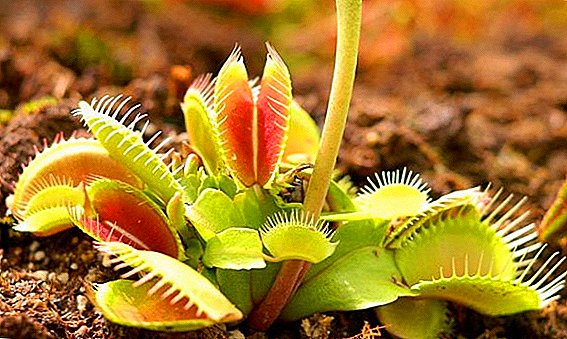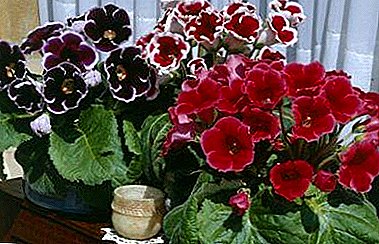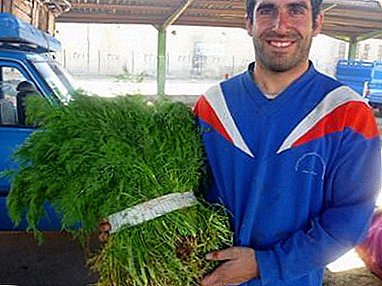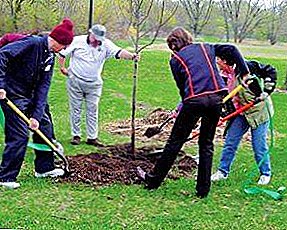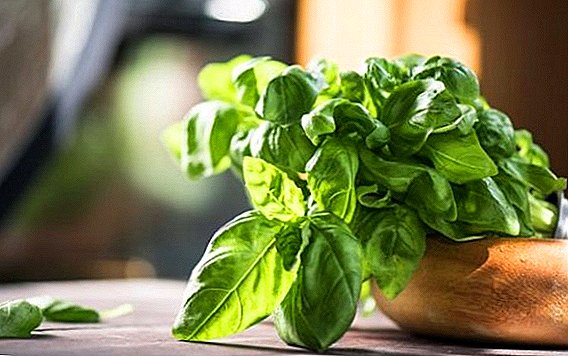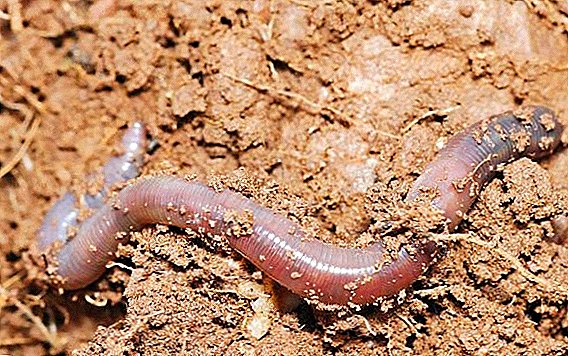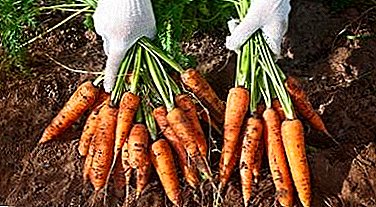
Carrots have long been familiar to all gardeners. There are no secrets in its cultivation, the main thing is to make some efforts, and then the fruits will get the perfect shape, as well as the quantity of the crop and its shelf life will increase.
What factors affect the good yield of this root and whether it is possible to leave it on the garden, the answers to these and other important questions about carrots read further in the article.
Factors Affecting Good Harvest
The yield of carrots depends primarily on its variety. The yield of early ripening varieties will be about 30-60 kg per square meter. However, the harvest from mid-season or late varieties reaches 40-70 kg.
There are varieties that give a record number of the crop, reaching up to 100 kg per square meter. To achieve good results is not difficult. To do this, follow all recommendations for growing carrots.
Important! If you do not follow the rules, you can completely lose the harvest. Among these rules are seed quality and a sunny place.
One of the most important periods is the appearance of the first shoots.. There is a chance to increase yields by as much as 40%. To do this, do the following:

- pre-soaked the seeds, immersing them in water for six hours, then dried and planted;
- before sowing and after it the soil must be slightly tamped;
- before the emergence of the seedlings need to constantly moisten the soil.
There are a number of additional actions used to increase the yield.
- This includes primarily crop rotation, which helps reduce the likelihood of damage to the fruit by pests.
- For planting carrots should choose a flat surface area.
- Increase seed germination will help deep loosening. This procedure should be carried out in the fall.
- Next comes the fertilizer soil. It can increase the shelf life of vegetables.
- And, of course, requires moderate and uniform watering of fruits.
How much can you get carrots with 1 ha and 1 acres in Russia?
If you properly care for the planted fruits of carrots, the harvest from one hectare may be in the range between 40 and 100 tons. The number of crops from one weave can reach one ton.
How many times in the life of fruits?
Carrot fructifies only once in a lifetime. To obtain fruits and seeds, the vegetable is left for the winter in the ground. After flowering and collecting seeds, the dying carrots are simply uprooted.
Growth time from planting to maturation
 Consider how many days the carrot grows in the open field from planting to harvest time. The timing of harvesting carrots depends primarily on its variety.
Consider how many days the carrot grows in the open field from planting to harvest time. The timing of harvesting carrots depends primarily on its variety.
- So, early varieties usually grow in 65-80 days.
- Mid-ripening varieties require more time. Usually this does not exceed a hundred days.
- Middle-late and late varieties require 90-115 and 110-130 days for ripening, respectively.
The countdown must begin to lead no earlier than the first shoots of carrots.
Experienced gardeners recommend signing sown carrot varieties, so as not to be mistaken in the timing of the harvest.
Terms of choice
The garden season usually ends in autumn. The timing affects the size and quality of the crop, as well as the safety of root crops in the winter season. Changes in climatic conditions may shift the time of picking a predominant number of vegetables, but the basic rules are still relevant.
For, To ensure that the harvest is necessary, several root crops are dug up for the sample.. If they are already overgrown with small roots, then it's time to clean the carrots. Otherwise, it is left in the ground for another two weeks.
Attention! The end of September is the most favorable time for harvesting. When collecting during this period, there is a probability of maximum yield and long-term storage.
When do you need to clean by maturity?
- Early carrots can be collected 60-80 days after the appearance of the first shoots. However, carrots of this kind are unsuitable for long storage, which is why it is usually planted a little. To the roots of early carrots have not lost their taste, it must be excavated by mid-July.
- The most popular carrot is mid seasonwhose ripening period is in the range from 80 to 110 days. The collection of this carrot usually falls in the middle of September.
- Late varieties in good weather, not only September, but also the beginning of October can be spent on the garden. Landing time also plays a big role. Carrots are usually planted the very first. It is recommended to record the sowing date on the bags from the seeds and keep them until the end of the summer. This helps in calculating the harvest date.
How to determine by appearance that the carrot is ready?
 The following facts indicate the readiness of carrots for harvesting.:
The following facts indicate the readiness of carrots for harvesting.:
- Dry yellowed lower leaves, as well as their lodging.
Yellowed middle leaves indicate that the carrot is sick, suffers from pests or is too long in the garden.
- The taste of carrots and its appearance: large bright orange fruit with a taste that suits you.
- At the sight of white roots on a root crop it is impossible to delay in harvesting.
Autumn cooling favorably affects the root crop: a gradual decrease in temperature slows down the growth of the tops, but the root crop itself increases in size.
Next, a visual video on how to determine the time of cleaning carrots:
Is it possible to leave the root crop on the garden?
A carrot is a cold-resistant plant, it is not afraid of frosts, and therefore it can definitely be left in the ground for the winter. However, it is worth considering that with a small amount of snow and heavy frosts, carrots should be covered with something. In the spring, the carrots must be immediately dug up, because then it will be unsuitable for eating.
Step by step instructions: how to harvest?
Harvesting is the most time-consuming process for every gardener, but nevertheless it does not make it any less pleasant. There are two ways of harvesting: by hand and by combine.
- With the manual method, first remove the dry leaves on the leaves, so that in the future they do not interfere with the collection.
- Then the shovel makes a dig. It is recommended to do this as carefully as possible to avoid damage to the carrots.
- Next, carrots gently pull out the tops and leave the beds for a short time, thus allowing the ground and the root vegetables to dry out.
Important! Do not dig carrots immediately after the rain, because it increases the risk of damage.
At the moment in the world there are two ways of harvesting vegetables combine.

- The first method is as follows: first mow the carrot tops, and only then use a combine that will focus exclusively on the harvest itself. However, this type of harvesting involves a high risk of damage to the fetus.
- In the second method, a so-called haunting type harvester is used. In this case, the carrot captures the belt conveyor for the tops, after which the root crop is sent to a special device that cuts the tops. The risk of damage to the fetus is very small.
Ways to remove tops
Do not twist the tops of the hands. The best option is to cut it with a knife. It should be noted that if small scapes remain on carrots, then closer to spring, the tops will begin to grow again, which in turn will not only reduce the mass of the root crop, but also significantly worsen its nutritional value. Therefore, it is necessary to cut the tip by 1-2 millimeters.
Subsequent storage
Root vegetables before laying in the box clean under a canopy immediately after removing the tops to slightly ventilate them. After that, the carrots are sorted, getting rid of the damaged fruit. Carrots intended for winter storage must be kept in a cool room for 5-6 days.
It takes a lot of time and effort to grow carrots, but a rich and high-quality crop of healthy vegetables will block all inconveniences. The main thing is to follow the basic rules of planting and caring for root vegetables. And then a tasty and crunchy vegetable will be in the daily diet of the whole family, giving away all its nutrients and trace elements.


